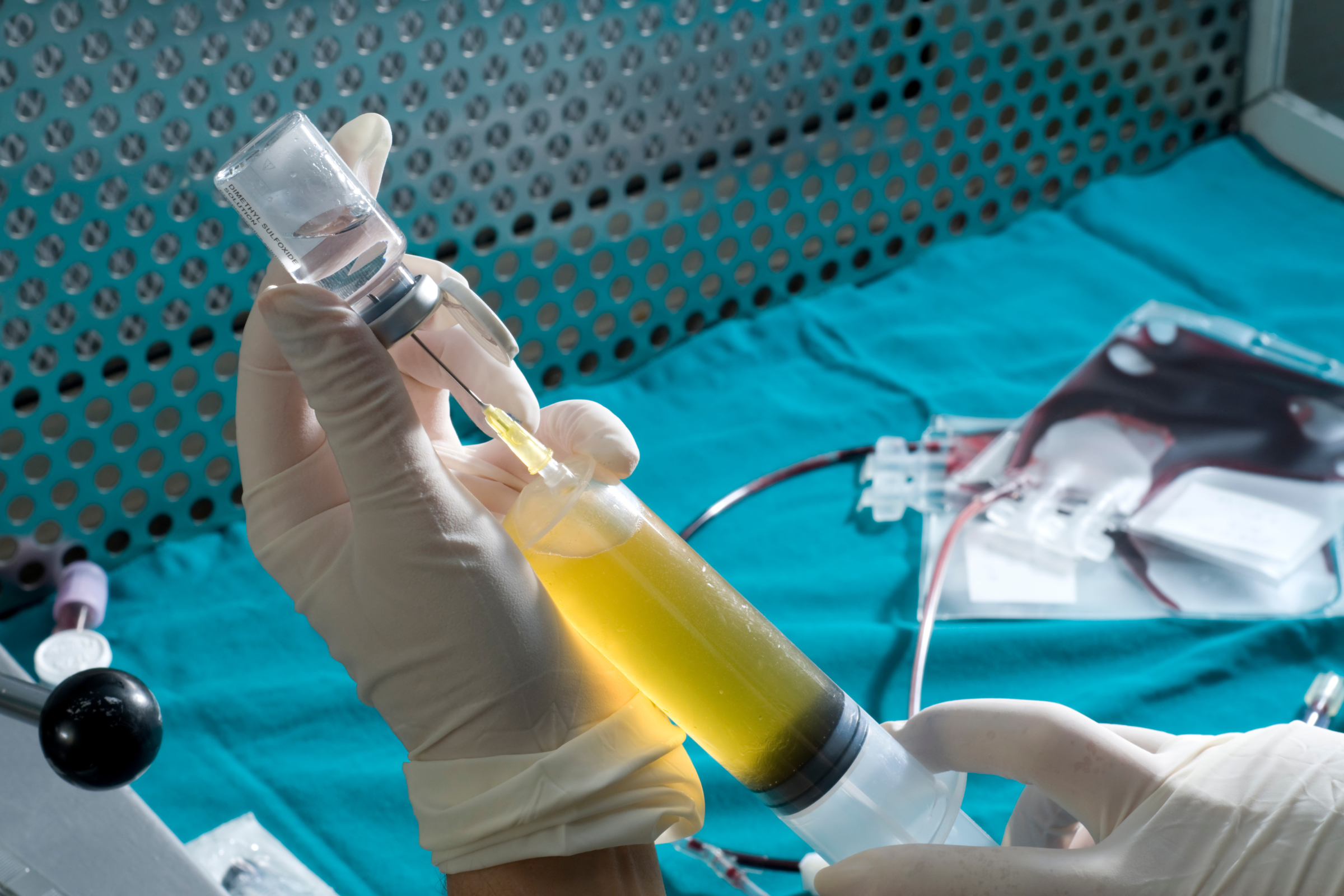
Lymphoma is a type of blood cancer that is caused by a mutation in white blood cells.
Lymphoma is the most common type of blood cancer. It develops when a mutation or change in lymphocytes (white blood cells) causes the cells to replicate faster than and live longer than normal lymphocytes. Cancerous lymphocytes can spread throughout the body via the blood and lymphatic system and grow in other body parts, including the lymph nodes, bone marrow, and spleen. In the United States, around 100,000 people are diagnosed with lymphoma each year.
-
Chronic Lymphocytic Leukemia/Small Lymphocytic Lymphoma (CLL/SLL) is a type of Non-Hodgkin's Lymphoma. CLL and SLL are the same diseases that manifest slightly differently. The location of the cancer cells will determine whether it is called CLL or SLL. In the United States, 19,000 people are diagnosed with CLL/SLL each year.
The symptoms of CLL/SLL can vary depending on the tumor's location but often include a swollen abdomen, feeling full after eating only a tiny amount, fatigue, shortness of breath, bruising easily, night sweats, and frequent infections. Many patients are diagnosed with CLL/SLL without any symptoms, and it is often found during routine blood tests or physical examinations. Many patients with CLL/SLL live for years without any symptoms.
Download the Lymphoma Research Foundation’s CLL/SLL Fact Sheet
-
Hodgkin lymphoma is characterized by the presence of Reed-Sternberg (RS) cells, and around 9,000 people are diagnosed with Hodgkin lymphoma yearly in the United States. Hodgkin lymphoma is most commonly diagnosed in young adults between the ages of 15 and 35 and older adults over 50.
HL is most commonly found in the lymph nodes and can spread from one lymph node to another and other organs in the body. One of the most common symptoms of Hodgkin lymphoma is swollen lymph nodes, which are often painless. Other symptoms can include fever, night sweats, unexplained weight loss, and lack of energy.
There are five subtypes of Hodgkin Lymphoma:
Nodular Sclerosis cHL is the most common subtype of HL characterized by the RS cells and normal white blood cells in the lymph nodes.
Mixed Cellularity cHL is more common in men and is characterized by lymph nodes containing RS cells and several other cell types.
Lymphocyte Depletion is an aggressive (fast-growing) type of HL characterized by a few normal lymphocytes and an abundance of RS cells.
Lymphocyte Rich is characterized by numerous normal appearing lymphocytes and classic RS cells.
Nodular Lymphocyte Predominant is an indolent (slow-growing) type of HL. It is associated with abnormal B-cells, which may be distributed in a nodular or knot-like pattern within the tissues.
Download the Lymphoma Research Foundation’s Hodgkin Lymphoma Booklet
-
Non-Hodgkin lymphoma (NHL) is not one disease but rather a group of closely related cancers called lymphoid neoplasms. NHL can differ in appearance under the microscope, as well as in molecular features, growth patterns, and how they respond to treatment. There are around 90 types of NHL, and any lymphoma not categorized as Hodgkin Lymphoma or CLL/SLL is classified as NHL.
The incidence of NHL nearly doubled between 1975 and 2013, and it is now the seventh most common cancer affecting adults in America. Each year, around 81,560 people are diagnosed with NHL in the United States.
The most common symptoms of NHL include swelling of the lymph nodes, fever, night sweats, unexplained weight loss, and fatigue.
There are two main categories of NHL:
B-cell lymphomas account for around 85% of all NHLs and develop from abnormal B-cells. Diffuse large b-cell lymphoma is the most common B-cell lymphoma and accounts for 22% of NHLs.
Natural Killer (NK)/T-cell lymphomas account for around 15% of lymphomas and develop from abnormal T-cells.
Download the Lymphoma Research Foundation’s Non-Hodgkin Lymphoma Booklet
Types of Lymphoma
Symptoms
Symptoms of lymphoma are often nonspecific, which means many different conditions can cause them. Common symptoms include:
• Swelling of lymph nodes, which can be painless
• Fever
• Unexplained weight loss
• Sweating (often at night)
• Chills
• Lack of energy
• Itching
However, it's important to remember that most people with these symptoms will not have lymphoma. If you have any of these symptoms, it's important to be examined by a doctor if the symptoms persist for more than two weeks or if the symptoms are severe enough to impact daily life.

Treatment
The treatment options for lymphoma can vary depending on the type of lymphoma. Some patients may also require a combination of treatments. Surgery is sometimes used to remove lymphoma tissue, usually for a diagnostic biopsy. Lymphoma's response to treatment can also vary significantly from patient to patient. Some patients may have a complete response to treatment and may never experience a recurrence of their lymphoma. Other patients may partially respond to treatment and eventually experience a lymphoma relapse. Unfortunately, the response to treatment can also change over time, and what was once an effective treatment may no longer be helpful. Each patient with lymphoma is unique, and each patient's treatment plan should be tailored to their individual needs. Discussing all treatment options with your doctor to make the best decision for your care .











